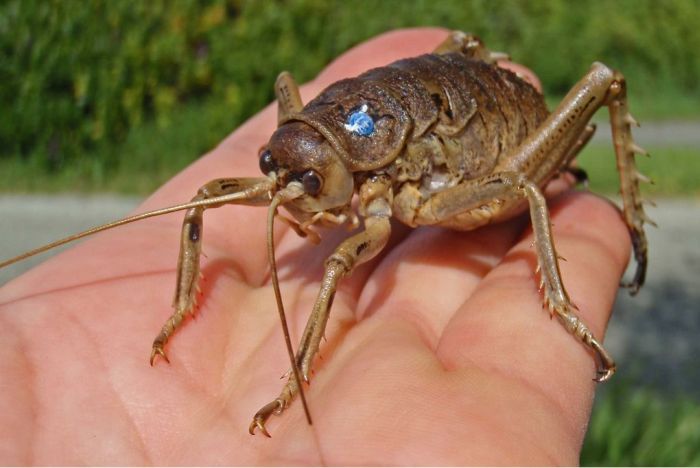|
|
Giant Weta
|
When the territories of species overlap, as with the related species H. femorata and H. ricta on Banks Peninsula, they may interbreed, although offspring are sterile.
• Tusked weta
Tusked weta are distinctive because of the males having long curved tusks projecting forward from their jaws. The tusks are used to push an opponent; they are not used for biting. The females are similar to ground weta. Tusked weta are mainly carnivorous, eating worms and insects. They consist of three species: the Northland tusked weta Hemiandrus monstrosus, now named Anisoura nicobarica; the Middle Island tusked weta Motuweta isolata; and a newly-discovered Raukumara tusked weta, Motuweta riparia. The Northland tusked weta lives in tree holes similar to tree weta. The Middle Island tusked weta, also called the Mercury Island tusked weta after the islands on which it lives, was discovered in 1970. It is a ground-dwelling weta, covering its shallow burrows with leaves. The Middle Island weta is the most endangered weta species and a Department of Conservation breeding programme is establishing new colonies on other islands of the Mercury Island group. The Raukumara was discovered in 1996, in the Raukumara Range near the Bay of Plenty. There are probably more species still to be identified.
|
|









